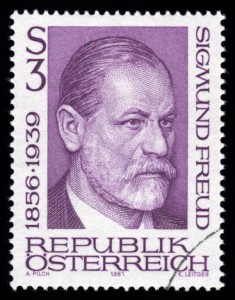Circus of Dreams (Part 9)
By Asher Crispe: November 27, 2012: Category Decoding the Tradition, Inspirations
To Light Up the Night
 The mouth, as the sewing machine that embroiders the shards and slivers of my dream experience into an appropriate story-dressing, still has to order its fabrics from somewhere. At issue are the source materials–from which field or pasture were they cultivated? Some follow the opinion of the Talmud (Brachot 55b) that largely regards dreams as the vain musing of the heart. This view would concur with contemporary perspective in cognitive psychology which regards dream activity as a kind of therapeutic technique by which the brain works through and processes the events of the day. Like an oven on a self-cleaning cycle, our dreams mostly amount to psychic residue–the crumbs and spills and splatter of our conscious mind. On the other hand, the Talmudic notion of a dream being1/60th prophecy would suggest that there is an import into the dream from transcendental origin. The drop of prophetic truth that falls into our nocturnal psychic soap cannot be explained away as a fluke nor entered into evidence as homegrown.
The mouth, as the sewing machine that embroiders the shards and slivers of my dream experience into an appropriate story-dressing, still has to order its fabrics from somewhere. At issue are the source materials–from which field or pasture were they cultivated? Some follow the opinion of the Talmud (Brachot 55b) that largely regards dreams as the vain musing of the heart. This view would concur with contemporary perspective in cognitive psychology which regards dream activity as a kind of therapeutic technique by which the brain works through and processes the events of the day. Like an oven on a self-cleaning cycle, our dreams mostly amount to psychic residue–the crumbs and spills and splatter of our conscious mind. On the other hand, the Talmudic notion of a dream being1/60th prophecy would suggest that there is an import into the dream from transcendental origin. The drop of prophetic truth that falls into our nocturnal psychic soap cannot be explained away as a fluke nor entered into evidence as homegrown.
Herein lies the most fundamental distinction between the assessment of dreams in Kabbalah and many of the contemporary psychoanalytic contentions. Following the winding path of free associative dream-logic, we might underscore the prescience of the essential sub-root of Yosef/Joseph having the letter Samech (circle of unclarified reality which is subject to interpretive spin) and Feh (or Peh–the mouth of the interpreter who spins the dream) in that the modern day founding father of dream analysis was Sigmund Freud whose name, while usually transliterated with a Zayin at the beginning, might be better served (given the associate sound) with the transliteration starting with a Samech for ‘Sigmund’ (סיגמונד פרויד).
In dream reality there is always some slippage or blurring of sounds, images, meanings and connections. Any signification built on iron clad rigid construction will not hold up. A flexible form factor is required. We must keep the definitions loose. When we hear Sigmund Freud we catch the sounds of the Samech (s) and the Peh or Feh (f) in his initials. While he also possesses the Samech and Peh (Feh), what he does not have are the letters Yud and Vav in Yosef’s/Joseph’s name. Both of these letters are part of the Divine name of the Tetragrammaton (Yud-Hei-Vav-Hei). Freud’s dream universe has cut itself off from all possibility of transcendence. For him, the substance of our dreams is entirely manufactured within the personal unconscious–a night that is limited to me only.
Some of Freud’s psychoanalytic offspring did endeavor to challenge this immanentist outlook. Carl Jung stands out in this company as one who placed tremendous weight on the idea of a collective unconscious which could be likened to an internet of subliminal experience within which each of our own personal conscious or unconscious states would function as its nodes. With recourse of a collective unconscious, my dreams are no longer merely my dreams. Our unconscious can transmit and receive. It speaks to and from a reality that is greater than just me.
In Kabbalah, this difference is reflected in the distinction between the collective or general Crown or Keter [כתר כללי] that resides above and surrounds all worlds and the particular Crown or Keter [כתר פרטי] of each individual world. With each person resembling a world, the Crown of that person or world would constitute the personal unconscious. Dreams emanating from that sphere would be more or less contained within that level of particularity. For the all inclusive Crown that includes all worlds, the collective connection would be maintained between all of the worlds. This would be cause for concern regarding my dreams about others and the dreams of others about me (a consideration that surfaces in the response of the congregation to the Priestly Blessing on Holidays that we cited in Part 7 of this series).
Separating out what is just me and the musings of my heart, and what has interpersonal or metaphysical significance within a dream, is part of the burden of the one interpreting it. Circling back to the extra letters in Yosef’s/Joseph’s name (Yud, Vav) that seem to be formally absent in terms of attitude and outlook on the ultimate significance of dreams in Freud, we can go a step further and breakdown their specific symbolism.
As the smallest of the Hebrew letters, the Yud which begins Yosef’s/Joseph’s name is likened to a point of origin. It is the unextended nothing or no-thing from which all the ‘something’ of reality is extended. Continuous recreation of the world cycles through moments of being unextended and then extended (like the line of the Vav). If we were to summarize the value of the Yud as a dot, it would be representative of complete novelty–the fuel injection or import of that which is not already contained in the universe.
As for the Vav, it connotes a drawing down of this new seed or spark of reality. Here extension amounts to expression. Things and experiences are not only totally new, they also form new expressions. They are related in unprecedented ways like new branches growing out of the same seed. These are two of the basic modalities of Being or Reality (the Tetragrammaton) that couple with the two appearances of the letter Hei. While the Hei also implies a type of expression or extension, it is relatively more concerned with providing a framework or structure. The first or higher Hei would relate to hidden structures (like those of thought in the interior of a person) verses the second or lower Hei that imparts a revealed structure (such as the externalization of self through communication and action). With just the two levels of the Hei, our existence would merely swing like a pendulum between inner and outer poles of our psyche. By contrast, the Yud and Vav introduce additional (‘yosef’ means ‘to add’) flows of experience into these frameworks thereby expanding them.
Picking up a loose thread from the blessing of Yosef/Joseph to be a ‘fruitful son’ which we deconstructed as a veiled reference to his proclivity towards generative meaning within the tailored interpretation of dream reality, we can now move on to dust off the second expression in that verse (Genesis 49:22) “…a fruitful son upon the well….” Why mention a well in this context? Looking closely at the Hebrew word for ‘well’ or better yet ‘well-spring’ or ‘fountain’ in this passage–ayin–we might recognize that this word also means an ‘eye.’ In fact, ayin is also an Ayin [ע] or the 16th letter of the Hebrew Alef-Beit. While Samech corresponds to the month of Kislev, according to Kabbalah, Ayin is the letter that resonates in the month of Tevet (which immediacy follows Kislev). Yosef’s own soul root expresses (through the mouth or peh) the possibilities that reside in the dark with the Samech of Kislev before they reach the Ayin of Tevet. In this way he is creative or fruitful “above” or “upon” (transcendent to) the eye (ayin) or Ayin.
Another important illusion at work here has to do with the connection between an eye and a well-spring or fountain. The tears that issue from the eye, according to the Sages, may be considered as the drops of water that emerge from the fountain. Contrary to popular belief that thinks tears are merely the consequence of overwhelming emotion, the rabbinic tradition contends that tears are the byproduct of a mind blowing experience or powerful insights that cannot be contained in the mind. When the vessel of the mind overflows, tears pour forth from the eyes as signs of profound wisdom.
 The tear is basically a drop whose form is depicted with the letter Yud which itself corresponds to Chochmah or wisdom (perhaps streaks of tears down the face which leave a trail that might be likened to the extension of the Vav). The support for this comes from Job 28:12 where the verse describes “And wisdom/insight [Chochmah] from where does it come?” The expression “from where” may be read as “from the eye” (m’ayin) as well as “from no-thing” (as ‘m’ayin’ suggests ‘from no-where’ or literally ‘from nothingness’). Insight (what is captured through intuition and is ‘in’-sight) occurs in the experience of seeing with the eye, the fountain. This fountain of thought mirrors the fountain of infinite creativity that ushers everything into Being. The deepest uppercase Reality seeds lowercase reality. This ‘something from nothing’ happens continually. Something is always being added from nothing. Yosef/Joseph embodies and self-actualizes this through his dream interpretation. Perhaps, if Freud had thought through the psychology of quantum physics as Jung did, he would have opened himself up to this opening within the psyche and universe.
The tear is basically a drop whose form is depicted with the letter Yud which itself corresponds to Chochmah or wisdom (perhaps streaks of tears down the face which leave a trail that might be likened to the extension of the Vav). The support for this comes from Job 28:12 where the verse describes “And wisdom/insight [Chochmah] from where does it come?” The expression “from where” may be read as “from the eye” (m’ayin) as well as “from no-thing” (as ‘m’ayin’ suggests ‘from no-where’ or literally ‘from nothingness’). Insight (what is captured through intuition and is ‘in’-sight) occurs in the experience of seeing with the eye, the fountain. This fountain of thought mirrors the fountain of infinite creativity that ushers everything into Being. The deepest uppercase Reality seeds lowercase reality. This ‘something from nothing’ happens continually. Something is always being added from nothing. Yosef/Joseph embodies and self-actualizes this through his dream interpretation. Perhaps, if Freud had thought through the psychology of quantum physics as Jung did, he would have opened himself up to this opening within the psyche and universe.
Finally, ploughing along on the roads of dream land, we could suggest that the place of dream analysis on the iconic analyst’s couch could also be prefigured with our Samech-Peh of Yosef/Joseph in that this is the stem of the word sapa [ספה] in Hebrew which means a ‘sofa’ (itself constructed from ‘s’ and ‘f’ or Samech–Peh or Feh). Thus figuratively, lying on the analysts couch is like ‘re-lying’ on the analyst. My sofa or comfort zone for divulging my dreams can be either Freud or Yosef/Joseph. Maybe we should keep in mind the next time we shop for a sofa that we want that latter model….
For Part Ten we will move on to build out a constellation of 11 different interpretations of the Samech.
http://www.interinclusion.org/inspirations/circus-of-dreams-part-10/
http://www.interinclusion.org/inspirations/circus-of-dreams-part-8/
Circus of Dreams (Part 9),
















;)
;)
;)
;)
;)
;)
;)
;)
;)
;)
